News:
The shameful story of art stolen by the Nazis, and the long fight to get it back
By Jenni Frazer
Twenty-five years since a landmark conference on looted treasures, Jenni Frazer asks why it has been so hard to get justice
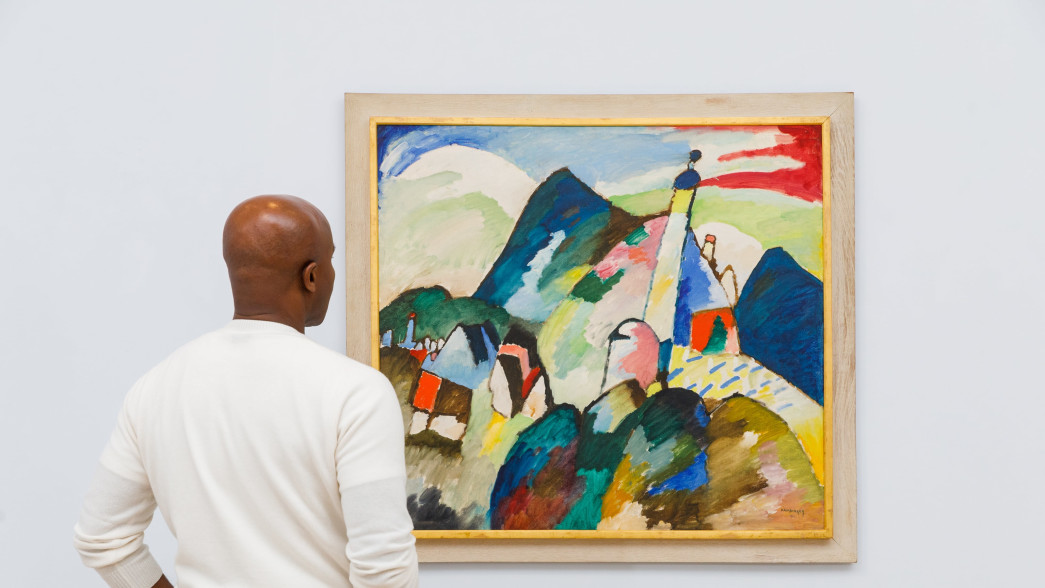
Kandinsky, Murnau mit Kirche II in situ
On a chilly London evening earlier this year, an excited crowd temporarily held their breath as a painting went on sale. It was no ordinary painting: it was Wassily Kandinsky’s glorious Murnau mit Kirche II, which fetched a new auction record of £37.2 million for the artist.
In the crowd, witnessing the sale at Sotheby’s auction house, were some members of the family, descendants of the original owners, Siegbert and Johanna Margarete Stern, owners of a textile company, who had four children and were active in the Jewish community.
Kandinsky created the painting of a little church in 1910, and Johanna, an avid collector, bought it directly from the artist.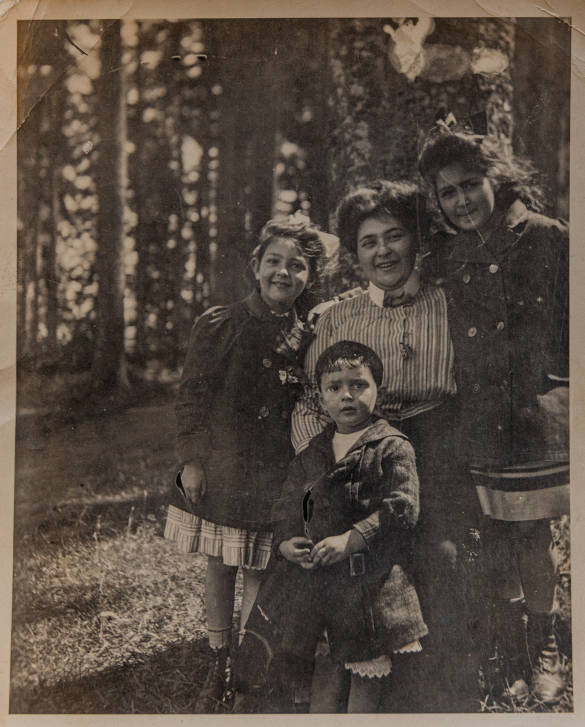
Johanna Margarete Stern with her children Annie, Hilde and Hans
For some in the crowd at Sotheby’s that night, where the auctioneer was flanked by banks of phones as bids came in from all over the world, the Kandinsky was not just a staggering financial sale. It was an extraordinary example of seven long years of research on the part of members of the Stern family.
Once Hitler rose to power in 1933, the Stern family could not enjoy their Kandinsky in their Potsdam home. Siegbert died before the war, but Johanna had to flee to the Netherlands, and was eventually murdered in Auschwitz, as was her daughter Luise.
The theft of the painting, like thousands of other artworks, was part of the Nazi mission to leave Jews with nothing. Everything that could be taken or stolen from Jews, was taken; or Jews were forced to sell their treasured possessions, no matter how meaningless such things often were to their persecutors.
Anne Webber, co-founder of the London-based Commission for Looted Art, quotes the writer and Holocaust survivor Eli Wiesel. “He said that everyone thinks of the Nazis as murderers. But, first they were thieves. From 1933 onwards in Germany, and then wherever they held sway, that’s what they did.”
More than 80 years after the end of the war, the world is still dealing with the fall-out from the Nazis’ wholesale theft, and some shameful stories have emerged. Museums and galleries which refused to return artworks, heirs being asked to “prove” their emotional attachment to a painting, some museums ignoring the pleas of heirs altogether, lawyers charging so much to families seeking the return of their paintings that they would ultimately be forced to sell, and the seeming endless bureaucracy involved in making a claim, which may well have deterred some applicants altogether. Shockingly, in the 1950s, Bavaria interpreting “restitution” as restitution to the Nazis who had stolen the artworks from their Jewish owners.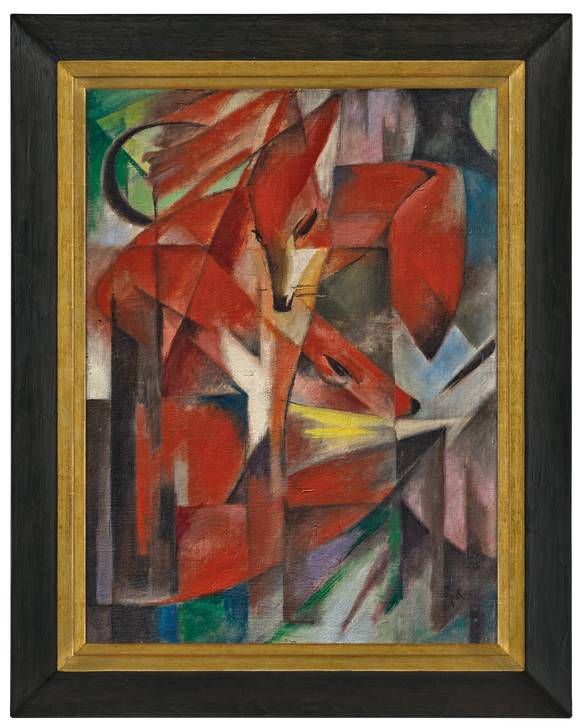
FRANZ Marc’s The Foxes (1913) was bought in 1928 by the Jewish banker Kurt Grawi. When the Nazis came to power, Grawi was forced to sell much of his art collection and was sent to the Sachsenshausen concentration camp. When he was released, he escaped to Chile. Grawi still owned The Foxes, however, and sold the painting in 1940. In 1961 The Foxes was “acquired” by Helmut Horten, a Nazi who donated it to the Dusseldorf Museum. In 2017, the heirs of Kurt Grawi made a restitution claim for the painting. After months of legal argument with the museum, The Foxes was restituted to the Grawi heirs. It was auctioned at Christie’s for £42.6 million in March 2022.
One Old Master painting was taken from a family from Vienna, now living in America. Anne Webber explains: “It had been confiscated and photographed by the Nazis, so we had an image of it. We discovered that it had been acquired by the Reich governor of Vienna, Baldur von Schirach. He was married to Henriette Hoffman, who was the daughter of Hitler’s official photographer, Heinrich Hoffman. Hitler was at their wedding. Von Schirach was responsible for sending some 60,000 Jews to their deaths. This painting was found by the Allies at the end of the war in the Hoffman collection (Heinrich Hoffman acquired it through his daughter and son-in-law), and we found documentation showing it had been accessioned into the Bavarian State Paintings Collection in Munich.
“We had the accession number, the inventory number — we wrote to them and said, you must have this painting, we’d like to make a claim for it. They replied no, we don’t have it. It took some time for them to admit it, but we eventually uncovered this huge scandal that had taken place. Instead of restituting the looted art to the families from whom it had been seized, Bavaria had instead returned many looted artworks, including this one, to the leading Nazi families. Henriette Hoffman had to pay only a nominal sum to get the painting back.” She sold it the following year for five times what she had paid.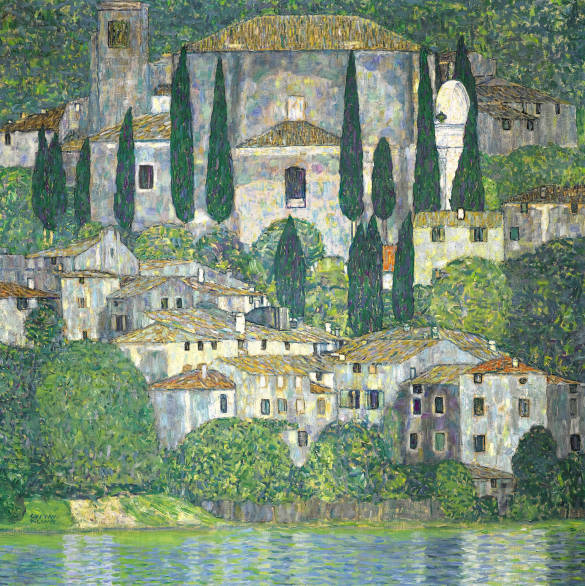
Gustav Klimt’s Church in Cassone (1913). In 1927 the painting hung in the home of the Austro-Hungarian Jewish woman Amelie Redlich, who inherited it from her brother. Amelie and her daughter Mathilde were deported by the Nazis in 1941 to Lodz , and then disappeared, probably murdered. Amelie had tried to hide her art collection in storage but when her son-in-law went to the storage facility in 1947, the crates were empty. In 2010, it was offered for sale at Sotheby’s, with a brokered deal in which the proceeds were split between the anonymous owners who had bought it in good faith, and Georges Jorisch of Montreal — Mathilde Redlich’s son. It fetched nearly £27 million.
By coincidence, this year, in which the Kandinsky was finally restituted to the Stern heirs, marks the 25th anniversary of a conference held in Washington DC in 1998.
This landmark conference, convened by the US Department of State and the US Holocaust Memorial Museum, brought together participants from 44 countries and 13 non-governmental organisations, to address the widespread loss and confiscation of art during the Holocaust era.
The conference established what have become known as the Washington Principles, 11 core goals about looted art, endorsed by the 44 governments. But only five countries — the UK, Austria, Germany, France and the Netherlands — have followed through with one of the main recommendations: that there should be national claims processes set up to deal with claims.
There is no clear answer as to why America, which hosted the conference, did not itself set up a national claims process, though it could be simply the vast size of the United States and the difficulty of enforcing such a process nationwide when most museums are privately owned.
Nevertheless, one of the leading auction houses, Christie’s, has taken advantage of this 25th anniversary to run a year-long programme of events relating to restitution of Nazi-looted art. The events were due to be held from January 2023 onwards in Amsterdam, Vienna, London, Berlin, New York and Tel Aviv.
But the Israeli event, due to take place in December was cancelled after the Tel Aviv Museum of Art pulled out of hosting, over an unseemly row over a Christie’s jewellery sale earlier in May 2023.
Christie’s had sold jewellery belonging to the late Heidi Horten, realising a staggering $202 million. Horten, an Austrian citizen, was the widow of German billionaire Helmut Horten, whom she met when she was 19 and he was 51.
The couple lived a luxurious lifestyle, collecting art, jewellery, homes and even yachts.
When Heidi Horten’s jewellery came up for sale, questions started to be asked as to the source of her late husband’s wealth. It became clear that Helmut Horten, who died in 1987, had “acquired” his first department store in Germany from Jewish owners who fled to America in 1933.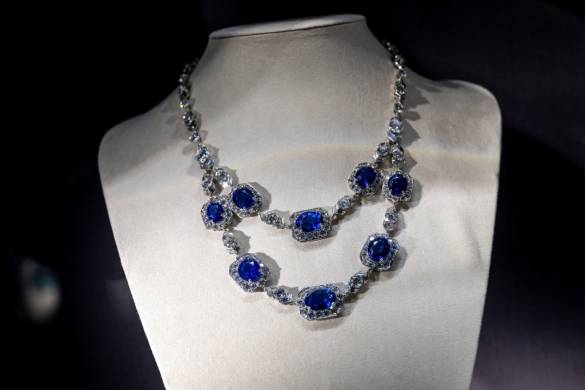
A Bulgari sapphire and diamond necklace at the World of Heidi Horten sale in Geneva.
Horten was said to have good relations with the Nazi authorities and became the owner of several other “Aryanised” department stores as the war broke out.
There is no suggestion that the jewellery itself was looted. But a sale of items belonging to the widow of a Nazi Party member, whose wealth came from profiting from fleeing Jews sparked outrage from Jewish groups and clients.
Christie’s proceeded with the sale, however, whose proceeds, according to Heidi Horten’s wishes, were due to be donated to her foundation which supports philanthropic causes.
But just a few weeks ago Christie’s announced that a further sale would be cancelled, because of the international criticism and “intense scrutiny”, pledging to reflect on the lessons learned. The move was welcomed by Jewish groups.
While the Washington Conference has become the template to which everyone in the art world refers when asked about looted art, its significance lies in the fact that it was the first major post-war attempt to deal with the issue. It’s all the more significant because even while the war was still raging in Europe, in 1943, there was what has become known as the London Declaration, an agreement drafted by the Allies in the knowledge of the wholesale looting by the Nazis.
As the arts and provenance lawyer Till Vere-Hodge explains: “The London Inter-Allied Declaration of January 1943 goes far wider than artworks, but it does make very specific reference, noting: ‘This [Nazi theft] has taken every sort of form, from open looting to the most cunningly camouflaged financial penetration, and it has extended to every sort of property — from works of art to stocks of commodities, from bullion and banknotes to stocks and shares.’”
Edvard Munch’s Dance on the Beach, a four-metre-wide panel painted in 1906 by the Norwegian artist as part of a commission from the theatre director Max Reinhardt. The panel became part of the collection of the German academic and art critic Curt Glaser, a friend of Munch but he was forced to sell it in 1934 as the Nazis rose to power, along with the rest of his collection. Glaser fled to the UK via Cuba,and died there in 1943. The painting was bought by Glaser’s friend Thomas Olsen who hid it from the Nazis in a barn, alongside a version of Munch’s The Scream. It was later restituted to the heirs of Glaser, who came to an agreement with the heirs of Thomas Olsen, and sold at Sotheby’s, in the same auction as the Kandinsky, for £17 million.
Vere-Hodge, speaking at one of the Christie’s Washington anniversary panels in June, added that the Allies were giving due notice to the enemy: “This warning [that action would be taken after the war] applies whether such transfers of dealings have taken the form of open looting or plunder, or of transactions apparently legal in form, even when they purport to be voluntarily effected.”
By the time of the London Declaration, in January 1943 — just 80 years ago — both the Americans and Russians had joined the Allies and “the tide of war was slowly turning”, said Vere-Hodge.
But for all the good intentions of the British Foreign Office, which had drafted the London Declaration, very little was done. Anne Webber says: “At the end of the war, the Allies collected all the looted art that they could find. They then decided that it should go back to the countries from where it had been taken, and those countries were then charged with restituting it. So, for example, 60,000 works went back to France, and in that post-war period 45,000 were returned. Fifteen thousand remained and museum directors were invited to choose the best 2,000 for their collections. The remaining 13,000 items were sold at auction for the benefit of the French state. This only became known in the late 1990s.”
“In Holland, around 4,000 artworks, returned for the purpose of restitution, were instead absorbed into their national collection. The same happened in Belgium, Austria and other countries.”
The Dutch, in fact, have had a variety of different policies over the years. A couple of years after the Washington Conference, with the input and encouragement of the Commission for Looted Art in Europe, the Dutch set up an independent panel to deal with claims. Many works were restituted initially. But as Anne Webber explains: “At a certain point the government decided the policy was too generous. So they introduced what became known as the balance of interests test. 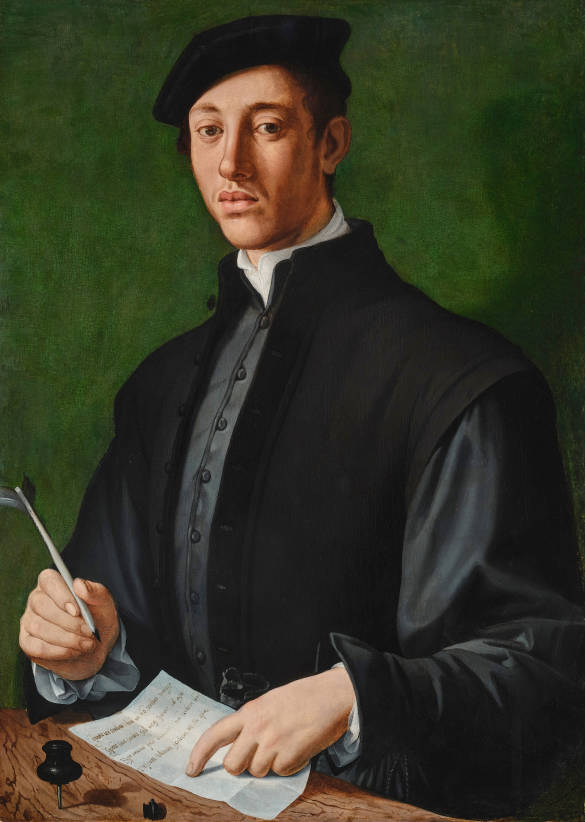
Bronzino’s Portrait of a Young Man with a Quill,1527. It was misattributed for decades but in 1927 was bought by the Jewish collector Ilse Hesselberger, who believed it to be a work by Francesco Salviati. She was a Munich-based businesswoman forced to sell her assets — including the Bronzino — in the hope of getting a visa to leave Germany. She was murdered in the Kaunas concentration camp in 1941.The painting went into the Linz “Fuhrermuseum” and was then found by the Allies group, the Monuments Men. Finally recognised as a Bronzino, it was restituted to Hesselburger’s heirs in 2022 and sold for $10.7 million, with proceeds benefitting Jewish charities in New York.
“This meant the panel would weigh up the interest of the museum in possession of the work of art, against that of the family making the claim, as to whether or not restitution should happen. The museum would be asked, how important is this painting to you? And the family would be asked, what is your emotional attachment to this work of art? So what could and did happen, was that a claim could be made, and the panel could say yes, this person lost this work of art as a result of persecution, but actually the interest of the museum in keeping it is greater. So the museum could keep it, and it would not be returned to the family.” After years of negotiation led by the Commission for Looted Art in Europe, this policy was eventually overturned in a Dutch government committee report called Striving for Justice, in which it was acknowledged that claimants had been treated very coldly.
After the war, some looted art whose owners couldn’t then be identified was sent to Israel. The Israel Museum in Jerusalem has 800 Judaica artefacts and 660 works of art which the former Bezalel National Museum received from the Jewish Restitution Successor Organisation (JRSO) in Nuremberg, between 1950-1955. Since 1998 the Museum has restituted just 30 works of art to the heirs of their owners. Several of the restituted paintings were given back to the Israel Museum either as long term loans or as gifts in memory of family members of the heirs.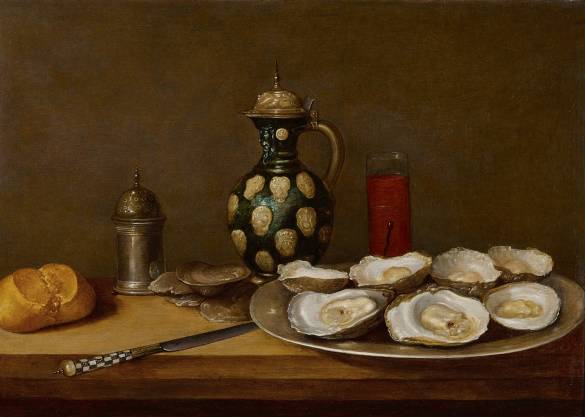
STILL Life with oysters, bread, a knife, drinking vessels and a caster by the Flemish painter Alexander Adriaenssen (1587-1661). In 2005 it was restituted to the sole heir of the collector Jacques Goudstikker. He was a Dutch Jewish art dealer who fled the Netherlands when it was invaded by the Nazis. He died when he fell in the hold of the SS Bodegraven in the English Channel, and broke his neck. His entire collection — more than 1200 paintings, many by Old Masters — was viewed by Herman Goering and then looted. The Dutch government finally restituted 202 paintings to the Goudstikker family in 2006; however, many of these were sold at auction in 2007 for $10 million to finance efforts to reclaim more of the looted art.
And the National Library of Israel also received thousands of books which were looted by the Nazis, though then, as the NLI’s Daniel Lipson explains: “It was impossible to find the original owners from whom the books had been looted. The Allies were left with thousands of books and there wasn’t sufficient information —Alfred Cohen of Warsaw could have been anyone.”
Lipson has just completed a major project to identify looted books now in the NLI’s collection, and says “the numbers will never be accurate, but we think we found about 35,000 records”. There is a policy of restituting books where the heirs can be identified but it is very rare.
Both of the leading international auction houses, Sotheby’s and Christie’s, have full-time staff overseeing restitution and provenance research.
Lucian Simmons, a barrister and solicitor, is Sotheby’s global head of restitution. He has been in the role for more than 20 years and says: “Our original concern, and still one of our prime drivers, is to make sure we don’t accidentally sell paintings that were taken from families — and never later given back.” Much of his team’s work, he says, “is to look at paintings that people bring to us for sale or ask us to value, and say, is there a red flag name here, is there a chance that this painting was stolen in World War Two from a family in Odessa, or Berlin, or Paris, and never given back?”
That’s a sentiment echoed by his opposite number at Christie’s, Impressionist art specialist Richard Aronowitz who worked at Sotheby’s, and joined Christie’s as its global head of restitution in March 2022. Aronowitz says: “Our fundamental purpose is to make sure that the auction houses don’t unwittingly sell unrecovered Nazi loot. [We are not just looking at] confiscation, but also works which were the subject of forced sales, or flight asset sale — anything that Jewish collectors owned in pre-Nazi Europe that they subsequently lost. We have to make sure that we don’t unwittingly offer it for sale without that being discovered in the item’s history, and the case resolved.”
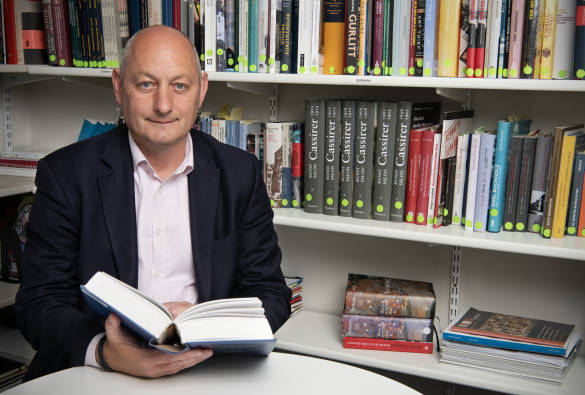
Richard Aronowitz Global Head of Restitution at Christie's
His take? “We are a sort of fine-tooth comb, moral, ethical, due diligence department.”
Everyone working in this field agrees that since Washington the definition of what constitutes looted art has evolved. Simmons says: “Twenty-five years ago I would call a client and say I want to help you sell your El Greco, or your Renoir, but there’s a problem, it may have been misplaced in World War Two. And they would throw their hands in the air and it would take a lot of time to calm them down. But now people are much more prepared to grasp this as an issue, partly because of the press publicising this as a present-day problem as well as a historical problem.”
Now, Simmons says: “When I call today and say, your painting belonged to a known [Nazi] collaborator, I’d like to do more research — and there’s a risk that this could lead to an adverse claim against your artwork —people are much more willing to say yes, I’d like to do it, I’d like to behave properly”.
Aronowitz agrees. “Things have changed fundamentally in the art world since the Washington Principles,” he says. “Essentially, in very broad-brush terms, before 1998, auction houses could offer for sale, with complete impunity, any work of art that was looted and not recovered after 1945. That all changed in 1998. What we do now is work that was not done before 1998, it’s a complete and utter sea- change.”
One of the suggestions at Washington was that a central, international database should be set up in order for claimants, auction houses, lawyers and researchers to be able to check provenance [the chain of buying and selling history and ownership]. This never happened, though most research and dogged detective work today is done through checking and comparing in at least six or seven databases, though they only contain a fraction of the art that was looted and which remains unreturned.
Perhaps the best-known is the London-based Art Loss Register. The ALR’s Camille Catania says it is the largest commercial database in the world of lost and stolen art. “We have 700,000 registrations, of which World War Two losses are a large part.”
It’s free to register and the ALR offers a paid-for search service, “where museums, galleries, art dealers, private individuals, or insurance firms, can reach out to us, and ask us to check provenance [of a particular artwork]. We can issue a certificate if we didn’t find a problem with it.”
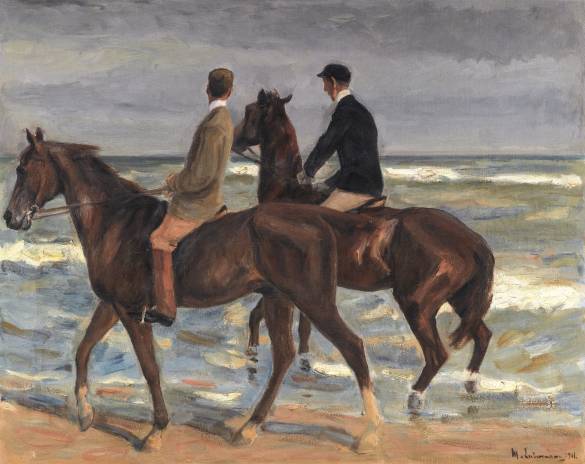
MAX Lieberman’s Two Riders on the Beach was painted by the German artist in 1901, while he was on holiday in Scheveningen on the North Sea. One of two similar paintings he made at the same time, the picture was acquired by the Jewish art collector David Friedmann in Breslau. It was seized by Nazis after the 1938 Kristallnacht pogrom and then in 1942 found its way into the hands of “Hitler’s art dealer”, Hildebrand Gurlitt. Gurlitt’s son, Cornelius, held on to his father’s collection and the hitherto secret stash included the Liebermann painting. It was recognised by David Toren, David Friedmann’s great-nephew, and restituted to the family in 2015. It was sold for close to $3 million in the same year.
Catania says: “The discussion [about restitution] is getting louder. People didn’t just lose lives and their loved ones, but everything they owned. There can be an emotional value, too: it’s not just about the artworks that are publicised and fetch millions. It’s often about items of lower value that are not in the news, that mean so much to the people that lost them.”
That is certainly something which resonates with Anne Webber, of the Commission for Looted Art in Europe. The Commission, which does not charge for its work, relying on donations, will, she says, “look for anything large or small, regardless of value.
“There are lots of smaller value items — and for commercial organisations, or lawyers, who do this work, to look for lesser value items is not financially worthwhile.”
Webber is very clear what the work means. She says: “This is about families whose histories have been unrecorded, Hitler’s project was to erase the Jews from history. Every time that we write a claim, we are restoring a family to the historical record by telling their story and what happened to them under the Nazi regime, and afterwards.”
By illustration, she talks about an approach from a library in Germany. “There are millions of looted books in German libraries. In one case, there were three books with a woman’s name handwritten [on the flyleaf], giving her maiden name as well. We were able to trace who she was and what had happened to her. They were a family from Germany who had fled to Belgium. She was a pharmacist, her husband was a lawyer. They had two children. When the Nazis occupied Belgium, the mother, father and the elder child were deported and murdered.
“The younger child, then six years old, was hidden by a Catholic family, survived, and was sent by Youth Aliyah to Palestine, aged nine. We managed to trace her, by then a grandmother living in northern Israel. She had nothing of her parents, no tangible evidence of their existence. So you can imagine what it meant to her when out of the blue we contacted her and returned three books which had been owned by her mother and had her mother’s signature, a signature she’d never seen, in a handwriting she’d never known, of a mother she scarcely remembered.
“One of the books had been written by her grandfather, and there was a note from him to her mother in the book. You can only imagine what it meant to her to hold those books in her hand.”
The central problem about looted art is that — as Webber says, ruefully — “effectively 90 per cent of what you’re looking for can’t be found.”
Much remains hidden, undocumented and unpublished. Much is in private hands, people who don’t consider themselves obligated by the Washington Principles. Even if it can be found, the fact that it is still possible to sell looted artworks in Europe, because there is no law to prevent you doing so, as title is awarded at the point of sale, means that families trying to recover art stolen from their grandparents or great-grandparents have an uphill struggle. Often the success of a restitution lies wholly in the geographical “luck” of where a painting re-appears.
Lucian Simmons takes quiet pride in the collaboration between Sotheby’s and the Stern family in getting the Kandinsky painting returned — and then sold for the best possible figure. He says: “The family had done the most incredible job advocating for the return of the painting, achieving its return and organising as a group to say they’d like to sell it.
“For me, the thing that was important for Sotheby’s was to say who the Sterns were, say not only why the painting is important, not only that it is a masterpiece, but also to say where it came from, why it was collected by the family, how they lived with it.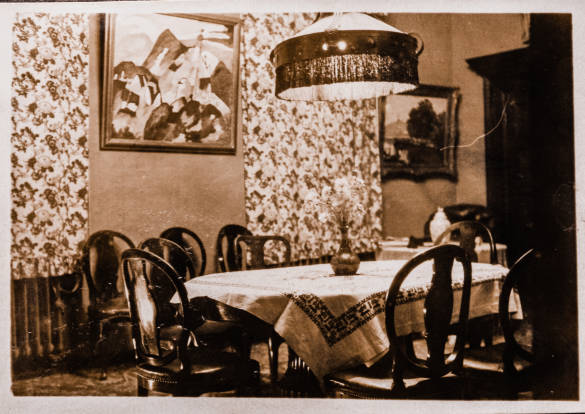
The Kandinsky on the wall of the Stern family home
“The family did all the research and put together the dossier which persuaded the Eindhoven museum to give the painting back to them.
“The museum and the Dutch government originally turned the family down and said ‘no, we’re not giving you your picture back.’ But the family were resilient, and said ‘we want justice, we do want our picture back.’
“So they gathered further information. [That included] the will prepared by Siegbert Stern in 1926, so well before the war. That will listed this painting as being in the collection. So they could prove that the picture belonged to them.
“And then, through happenstance, they found a photo album which showed the picture hanging in their dining room. So they could prove that it was in their home, and that they lived with it. That was incredibly persuasive.
“Then the museum itself found a postcard in the Smithsonian Institution in Washington DC, from the wife of a Jewish refugee dealer, living in Holland, who was also a collaborator [with the Nazis]. The postcard was from the 1960s and said, this is a postcard of a Kandinsky we used to own.
“This was wonderful, it was like a pin on a board proving that the dealer, who was a refugee himself, was also playing both sides to the middle.
“The family knew that the dealer had worked with Johanna-Margarete Stern, and helped find paintings for her to buy as bribes [to the Nazis] to get an exit visa. And that tied up with the man who worked with the dealer who sold the painting to the Eindhoven museum.
“It’s like a broken mirror, with one fragment that actually made the whole.”

